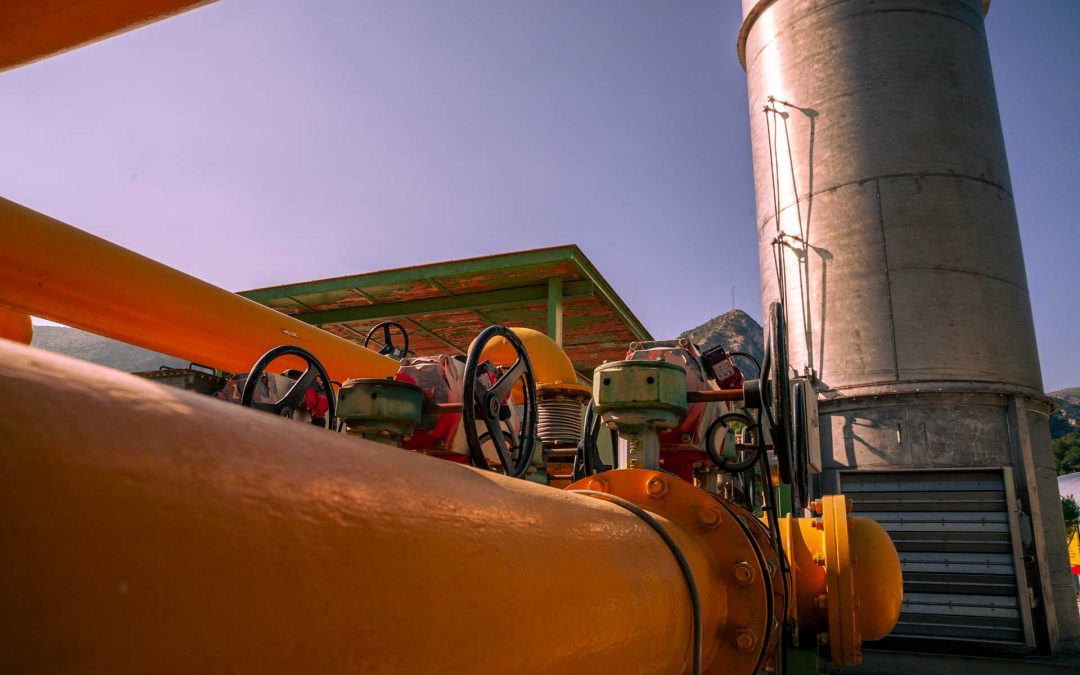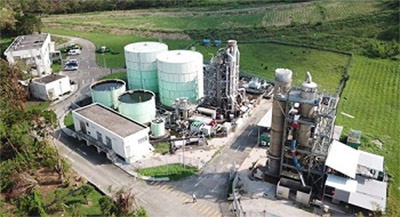
Biogas Purification Techniques for a Greener Tomorrow
Organics is committed to leading the way in developing sustainable solutions for environmental issues. This includes advancing biogas purification techniques and contributing to a more environmentally friendly future. Our company has accumulated more than 30 years of experience and knowledge in developing advanced technology to mitigate the environmental effects of biogas production from sewage treatment facilities.
This blog examines the ecological consequences of biogas production, investigates sustainable ways of purification, and discusses the most recent breakthroughs in biogas purification system technology. Join us in pursuing a more sustainable future, where biogas is crucial in mitigating greenhouse gas emissions and advancing renewable energy generation.
Environmental Impacts of Biogas
Inadequate management of the biogas-generating process in sewage treatment plants can have significant ecological consequences. An important issue is the emission of methane, a potent greenhouse gas, during the production and storage of biogas. Although biogas is generally seen as a more environmentally friendly option than fossil fuels, it is crucial to decrease methane emissions to fully exploit the environmental advantages of biogas production.
Moreover, inadequate management of biogas can result in unpleasant smells and the release of harmful substances into the atmosphere, which can negatively impact the quality of the local air and the well-being of the people. To alleviate these environmental effects, it is crucial to employ efficient biogas purification methods that can effectively eliminate pollutants and reduce methane emissions to a minimum. Sewage treatment plants can improve their environmental impact by implementing sustainable biogas purification techniques and contributing to a cleaner, more sustainable future.
Sustainable Biogas Purification Methods
Sustainable biogas purification technologies aim to effectively eliminate contaminants from biogas with little energy consumption and environmental impact. An effective way to remove hydrogen sulphide and siloxanes from biogas streams is by utilising activated carbon filters, which absorb these substances. In addition, biological desulphurisation techniques employ sulphur-oxidising bacteria to transform hydrogen sulphide into elemental sulphur, thereby decreasing the requirement for chemical additives and lowering trash production.
One further option for sustainably purifying biogas is membrane separation technologies, such as pressure swing adsorption (PSA) and membrane filtering. PSA systems employ adsorbent materials and change pressure settings to selectively eliminate pollutants such as carbon dioxide and moisture from biogas streams. Membrane filtering techniques employ semi-permeable membranes to separate contaminants according to their molecular size and characteristics, providing a cost-effective and energy-efficient purification method. In addition, cutting-edge methods such as biogas upgrading by biological methanation utilise methanogenic microorganisms to transform carbon dioxide into methane, thus increasing the energy value and improving the quality of biogas while simultaneously decreasing its carbon emissions. By incorporating these eco-friendly purification techniques into the biogas production processes, wastewater treatment plants can improve the environmental sustainability of biogas generation and aid in the shift towards a circular economy.
Understanding Biogas Purification System Technologies
Biogas purification systems use many technologies to eliminate contaminants and improve the quality of biogas for energy production and other purposes. The technologies encompassed are:
- Adsorption is when activated carbon filters and molecular sieves remove contaminants from biogas streams, enhancing gas purity and reducing environmental effects.
- Chemical scrubbing is a process that uses scrubbing solutions, such as compounds based on amines, to eliminate acidic gases, such as hydrogen sulphide and carbon dioxide, from biogas.
- Membrane separation techniques employ semi-permeable membranes to selectively exclude contaminants from biogas streams, taking into account their molecule size and polarity.
- Biological desulfurization is a method that utilises sulphur-oxidising microorganisms to transform hydrogen sulphide into elemental sulphur. This approach reduces the reliance on chemical additions and minimises trash production.
Sewage treatment facilities can optimise biogas production’s environmental and economic advantages by utilising sustainable biogas purification techniques and modern purification system technologies to efficiently eliminate contaminants from biogas streams. These endeavours contribute to a more environmentally friendly future by diminishing greenhouse gas release, advocating for renewable energy generation, and endorsing sustainable waste management methods.
Please contact us to get more information about biogas purifying methods and technologies. Let us collaborate to achieve an environmentally cleaner and more sustainable future.



